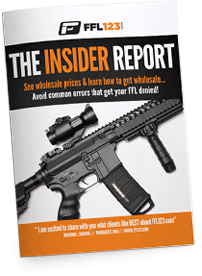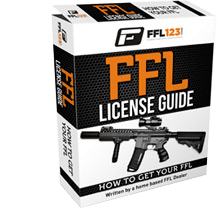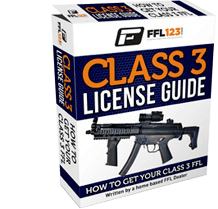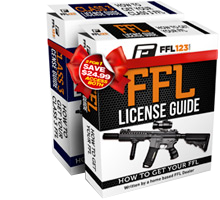Like any other gun on the market, there are plenty of ready-made AR-15s available for purchase. They come complete out of the box and are ready to shoot. Of course, the modularity of the design means that people often end up swapping parts, so for some, it makes more sense to buy the gun in pieces and assemble it yourself.
The AR-15 is one of the most popular models of rifle on the market. The platform for this firearm is often referred to as “adult LEGOs” and for good reason – but probably not the one you’re thinking. No, an AR-15 is most certainly not a toy like LEGOs. However, the adaptability and ease with which you can swap out parts and change the gun’s overall appearance, performance, and design are super simple – like putting together LEGOs.
Like any other gun on the market, there are plenty of ready-made AR-15s available for purchase. They come complete out of the box and are ready to shoot. Of course, the modularity of the design means that people often end up swapping parts, so for some, it makes more sense to buy the gun in pieces and assemble it yourself.
In order to build your own custom AR, you have two major strategies in which you can approach the build. The first is to focus on purchasing all of the items from the appropriate manufacturers. This allows you have a company that can provide refunds as well as help you troubleshoot their products. Generally, commercial AR parts are tested and have a higher standard of quality. Despite these benefits, there is a drawback.
If you want to buy a lower receiver from a commercial manufacturer, you will have to go through the same process as buying a pre-built, complete firearm. This is because the lower receiver is the only piece on an AR that bears the weapon’s serial number. By purchasing a commercially-manufactured lower receiver, you are essentially purchasing an entire rifle in the eyes of the government. That said, you will have the ability to sell your weapon to another party in the same way that you could sell any other rifle.
The second option is to create your own. Most commonly, this is used as a way to bypass the restrictions placed on the lower receiver. While it is possible to make a lower receiver from scratch, it is easier to buy an “80% complete” lower receiver. This means that the lower receiver has sections that have not been cut out and do not render this part operational in its present condition. Because it falls under the ATF’s threshold as a firearm, you do not have to deal with the restrictions placed on firearms.
Once you have an 80% lower receiver, you will use your own tools to complete the part and make it functional. This results in a firearm that does not have a serial number and is completely unregistered, though completely legal to own in most of the United States. Due to the fact that you made it, it is legal to own, but will be illegal to sell to any other person. If you are interested in building AR’s as a business, you will need an FFL license to sell to the public. The process can be confusing, so check out our guide to make the process easier.
Table of Contents
Purpose
Before we discuss the parts needed for an AR, it is important to consider what you’ll be doing with the gun. An AR-15 that’s used primarily for hunting will be set up different than one used for 3-gun competition, and different still than one used for home defense. Take some time and figure out which kind of gun you’re going to build, and then start looking at parts.
The bonus of the AR platform’s modularity is that you can easily swap parts to make the same basic gun serve multiple purposes, so that’s a huge plus if you’re on a budget.

Parts List
OK, let’s take a look at the parts you’ll need.
Upper Receiver
The upper receiver is the portion that holds the bolt, barrel, sights, gas tube, gas block, and pretty much everything that comes in direct contact with the rounds of ammunition. The upper receiver size and the barrel diameter will determine exactly what caliber your AR-15 will shoot. It is important that the elements of the upper receiver are manufactured with optimum quality because they have the largest impact on the actual performance of the weapon.
You can buy completed upper receivers that already have all of the components that we mentioned above installed, or you can buy one that is stripped and build it yourself.
Bolt Carrier Group
The bolt carrier group has several small pieces and has a multitude of purposes. The bolt carrier group is responsible for cycling an AR-15 through the stages of firing. These pieces have a direct result on the reliability of your AR. If you have a faulty extractor, your weapon may experience a large number of malfunctions as it makes it hard to eject the round. The same problem can occur if your firing pin is failing to strike a cartridge’s primer consistently or properly.
Lower Receiver
The lower receiver is the focal point of an AR-15 because all of the other elements attach to it, and it is the only piece that carries the serial number. Once completed, the lower receiver will house the trigger, bolt catch, buttstock, safety, and pistol grip.
Due to being the piece that acts as the interface between the user and the weapon, it is important to pay attention to personal comfort and preference when it comes to building your lower receiver. You can choose different sized trigger guards, ambidextrous safeties, folding buttstocks, and more.
Trigger
The trigger is definitely the most tactile piece of the rifle and is also one where the most user-specific preference comes into play.
The pull weight of the trigger to get it to fire will often be tailored to a specific use. Lighter ones are often used for precision shooting while heavier ones are used for self-defense. Flat and straight trigger bows change how it feels in your hand and how the trigger will break when you manipulate it.
It’s a good idea to go to a store and see if they have trigger models set up where you can test them out and get a feel for what’s best for you and what you like the most.
Sights – Irons or Optics
Iron sights were the standard on the AR-15 platform. Soldiers used them like that in combat at long distances and had no issues. However, technology changes. Iron sights are not always used on ARs today, though they do work as a great backup for those who need to have reliability in extreme situations. If you plan on using your AR for competition or varmint hunting, it is wise to purchase flip-up sights as they can be adjusted so they are not in the way of your primary sighting system. For a budget AR, fixed sights can provide a solid platform to engage targets. Some of the older AR-15 styles have fixed sights built into the upper receiver by way of a carry handle.
Reflex sights are commonly known as red dot sights, though not all use a red dot. They are built on a quick, two-eye open style which keeps the shooter aware of the world around them. In addition, reflex sights are great for engaging close range targets since you only need to place the reticle on the target. Reflex sights can vary widely in price, but more doesn’t always mean better. Do some research and figure out what’s best for you.
Magnification
Scopes and magnifiers offer magnification over iron sights or reflex sights. Many inexperienced shooters think that this is needed to shoot easier, though low-quality scopes or reflex magnifiers can turn a great weapon into something unreliable. Since most people won’t be shooting an AR-15 at distances of more than 500 meters, it isn’t necessary to use a long-range scope designed for a high-powered bolt-action rifle. Keep that in mind and don’t go overboard since too much scope or magnification can be a hindrance.
Accessories
Lights, lasers, slings, and more are all popular add-on components to an AR-15. They are, of course, incredibly personal and subjective to the user and purpose of the gun.
Conclusion

Building an AR can save money and offer the freedom that many experienced shooters want when it comes to their weapons. Some people enjoy building ARs so much that they’ve decided to go into business doing it for other people. If you decide to create and sell custom ARs, you have to abide by federal regulations. It is required that you obtain an FFL in order to sell your brand’s personal weapons directly to a consumer. If you need help navigating the process, check out our FFL Guide. We will walk you through all the steps necessary to getting your FFL and starting your own custom AR business!
—OLD CONTENT from 2017 —
AR-15 is one of the most popular models of rifle on the market. According to Fox Business, over 30,000 AR’s were sold during a seven-day period at a single store. Though the reason for a purchase can range from a simple competition firearm to trying to beat gun bans, it is obviously that it is one of the most popular models. Due to its aesthetic design and its similarity to the military’s M4, those who are not familiar with firearms have allowed ignorance and fear to dictate their political agenda.
This has resulted in bans like the California state law that prohibits the sale of Assault Weapons within state borders. Other areas have restricted access at the behest of President Obama. Despite this, only 48% of people support stricter gun control. Despite many of these unpopular restrictions, many states do not prohibit the manufacturing of firearms even if the limit the sale. With the development of CNC technology, it has become possible for an individual to create all the parts of an AR-15 in their garage.
Aftermarket & CNC Design
In order to build your own custom AR, you have two major strategies in which you can approach the build. The first is to focus on purchasing all of the items from the appropriate manufacturers. This allows you have company that can provide refunds as well as help you troubleshoot their products. Generally, commercial AR parts are tested and have a higher standard of quality. Despite these benefits, there is a drawback.

If you want to buy a lower receiver from a commercial manufacturer, you will have to go through the same process as buying a pre-built firearm. This is because the lower receiver is the only piece on an AR-15 that bares the weapon’s serial number. Buy purchasing a commercially manufactured lower receiver, you are essentially purchasing an entire rifle in the eyes of the government. That said, you will have the ability to sell your weapon to another party in the same way that you could sell any other rifle.
The second option is to use a personal CNC machine to create your own parts. Most commonly this is used as a way to bypass the restrictions placed on the lower receiver. While it is possible to to make a lower receiver from scratch, it is easier to buy an, “80% complete” lower receiver for as little as $60.00. 80% means that the lower receiver has sections that have not been cut out and does not render this part operational in its present condition. Because it falls under the ATF’s threshold as a firearm, you do not have to deal with the restrictions placed on firearms.
Once you have an 80% lower receiver, a personal CNC machine can be used to cut out the needed sections and make this part fully operational. This results in a firearm that does not have a serial number and is completely unregistered. Due to the fact that you made it, it is legal to own, but will be illegal to sell to any other person. If you are interested in building AR-15’s as a business, you will need an FFL license to sell to the public. The process can be confusing, so check out our guide to make the process easier.
Purposes
Before we discuss the parts needed for an AR-15, it is important to discuss the common variants in the civilian market. The primary purpose of your rifle should factor into the components that you build it with. Below are three of the major categories and each part will have a recommended part for each.
Competition
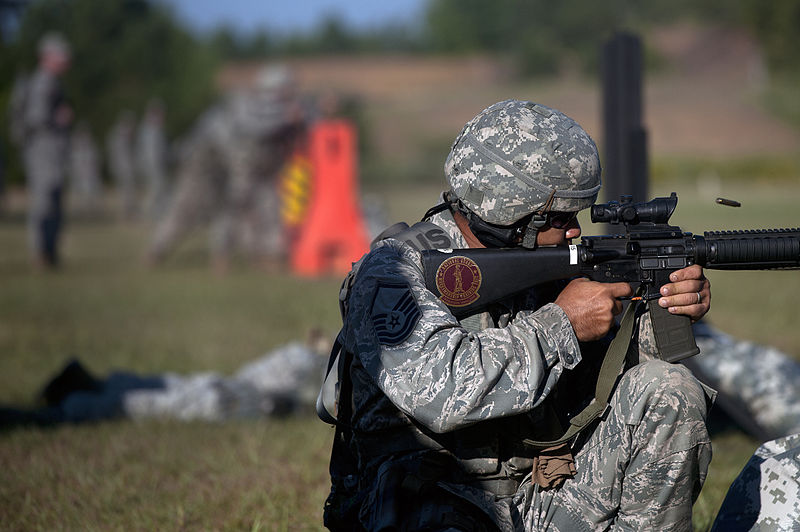
Competition AR’s are built for shooting on a range and controlled situations. Rather than outfitting your rifle with several tactical accessories to increase the appeal of its appearance, competition AR’s use the highest quality materials to increase accuracy and effectiveness. For pre-built competition AR’s Rock River Arms is one the industries leaders. Their LAR-15 R3 retails for around $1,400.00.
Hunting
Some people believe an AR-15 is an ineffective weapon when it comes to hunting. In comparison to more traditional hunting rifles like a 30-06 Springfield, it uses a smaller round, has a lower velocity, and smaller muzzle energy. For larger game like deer, an AR-15 toes the line of being enough to get the job done.
This is because the round isn’t designed to kill larger animals but rather to wound them. It stems from NATO’s need to find a universal combat round in order to simplify logistics concerning combat. NATO believes that a wounded combatant will inhibit others from fighting because they will stop to take care of their comrade. If the wounded combatant dies, then it frees the others to return to the fight. Due to this reason, the AR-15’s standard 5.56mm round is not ideal for hunting large game.
This does not mean it isn’t effective for all forms of hunting. For many, the AR-15 is a leader when it comes to hunting coyotes and foxes. These smaller animals are often harder to hit and the semi-automatic nature of the rifle allows hunters to quickly engage their targets while the magazine capacity allows shooters to have enough rounds to finish the job.
Budget
For many, a budget AR is one of the first experiences one uses to begin custom builds. This can be due to limited financial resources or because you want to experiment creating your own through a CNC machine without making a large investment. If you want to build a budget AR, the best way is to purchase each piece individually as it can save a significant amount of money when compared to the MSRP of brand name weapon. Remember, if you plan to use an 80% lower, it is illegal to sell it without a serial number. This is only a good option if you plan to keep the rifle for personal use.
Parts List
Upper Receiver
Budget: $279.99
Hunting: $639.99 (With BCG)
Competition: $679.99 (With BCG)
The upper receiver is the portion that holds the bolt, barrel, sights, gas chamber, and pretty much everything that comes in direct contact with the round. The upper receiver will determine exactly what round your AR-15 chambers. It is important that the elements of upper receiver are manufactured with optimum quality because they have the largest impact on the actual performance of the weapon.
Poor quality barrels can have a rifling ratio which reduces the maximum effective range of the round. In addition, if the materials are compromised, this can create a potentially fatal situation if the weapon malfunctions during operation. Though it is possible to create portions of the upper receiver with a CNC machine, it is highly advised that you use tested uppers from established manufacturers. The above video shows an example of a catastrophic malfunction caused by a squib round.
Bolt Carrier Group
Budget: $99.97
Hunting: $159.59
Competition: $263.31
The bolt carrier group has several small pieces and has a multitude of purposes. The bolt carrier group is responsible for cycling an AR through the stages of firing. These pieces have a direct result on the reliability of your AR-15. If you have a faulty extractor pin, your weapon may experiences a large number of malfunctions as it makes it hard to eject the round. The same problem can occur if your firing pin is failing to strike a cartridge’s primer.
It is possible to purchase an entire kit for your bolt carrier group, but if you want to buy each piece individually, you will need:
Firing pin
Bolt
Bolt Carrier
Retaining Pin
Extractor
Lower Receiver
Budget: $39.99
Hunting: $395.00
Competition: $405.00
The lower receiver is the focal point of an AR-15 because all of the other elements attach to it, and it is the only piece that carries the serial number. Once completed, the lower receiver will bare the trigger, stock, selector switch, and magazine well. Due to being the piece that acts as the interface between the user and the weapon, it is important to pay attention to personal comfort and preference when it comes to building your lower receiver.
Trigger well
Budget: $25.99
Hunting: $240.00
Competition: $269.00
The trigger setup is a bit complicated to install, though still doable with some patience and a bit of instruction. One factor that is useful in considering is the weight required in the trigger pull. The competition grade trigger assemblies allow adjustable sensitivity. Small trigger pulls help with a shooter’s trigger squeeze, but they can also make the rifle prone to negligent discharges, so the hunting focused trigger assemblies have set weights at three, four, and five pounds of pressure.
Sights
Iron
Budget: $35.00
Hunting: $170.40
Competition: $246.36
Iron sights are not always used on AR-15’s though they do offer a great backup for those who need to have reliability in extreme situations. If you plan on using your AR for competition or varmint hunting, it is wise to purchase flip up sights as they can be adjusted so they are not in the way of your primary system. For a budget AR, fixed sights can provide a solid platform to engage targets. Some of the older AR-styles have fixed sights built into the upper receiver.
Reflex
Budget: $49.99
Hunting: $459.00
Competition: $678.00
Reflex sights are commonly known as red dot sights, though not all use a red dot. They are built on quick, two-eye open style which keeps the shooter aware of the world around them. In addition, reflex sights are great for engaging close range targets since you only need to place the reticle on the target. Reflex sights can range from around $50 to a couple hundred, so make sure to research each one instead of assuming each is equal.
Magnification
Budget: $91.49
Hunting: $189.99
Competition: $232.63
Scopes offer a magnification over standard vision. Many inexperienced shooters think that this is needed to shoot easier, though low quality scopes can turn a great weapon into something unreliable. Since most AR’s have a max effective range around 500 meters, it isn’t necessary to use a long range scope designed for a high-powered bolt-action rifle. A popular brand that is between a full powered scope and reflex sight is the ACOG. It offers enough magnification to aid in shots out in the 300 meter range, but not enough that it tunnels the weapon in and makes it ineffective at close range.
Conclusion
Building an AR-15 can save money and offer the freedom that many experienced shooters want when it comes to their weapon. If you decide to create a custom AR, you may consider selling. In order to abide by federal regulations, it is necessary to obtain an FFL in order to sell your brand’s personal weapons directly to a consumer. If you need help navigating the process, check out our FFL Guide. Thanks for reading, and we hope you are having an awesome day.





